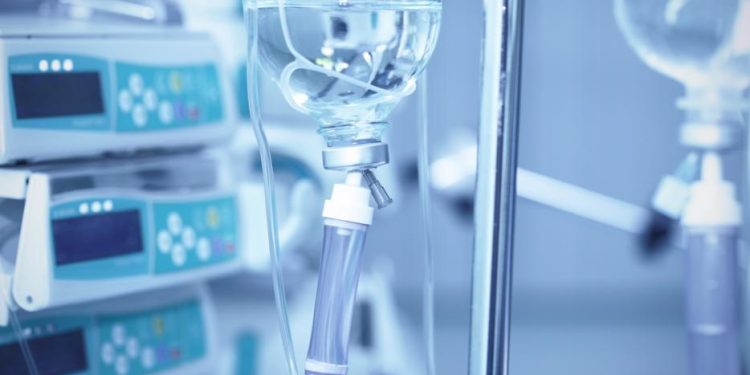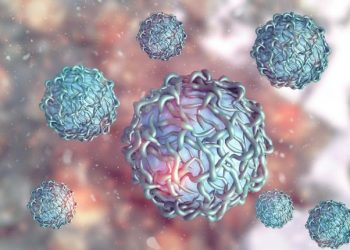The vast majority of lung cancers are non small cell carcinomas (NSCLC). These cancers start in the cells that line the airways of the lungs.
There are three main types of NSCLC: squamous cell carcinoma, adenocarcinoma and large cell carcinoma. NSCLC can also recur after treatment. Recurrence rates are lower for people with early-stage NSCLC.
Risk factors
Smoking and secondhand smoke exposure increase a person’s risk for developing lung cancer. Lung cancer kills more people than breast, colon, and prostate cancer combined. It is found more often in people who smoke and those who have smoked for longer periods of time, but it can also occur in nonsmokers. The type and severity of the cancer depends on how much and how long a person smoked, as well as his or her age when they first started smoking. The disease can be less severe if the person quits smoking.
The most common types of NSCLC are squamous cell carcinoma, adenocarcinoma, and large cell carcinoma. They all grow from epithelial cells that line the bronchi and terminal alveoli, but they vary in their growth patterns. These growth patterns give them different names and are referred to as histological subtypes.
The stage of the tumor determines the treatment plan. Stage IIIA NSCLC is a heterogeneous group of patients ranging from resectable, T3 tumors invading the chest wall to unresectable, bulky, mediastinal involvement with metastases to ipsilateral hilar or peribronchial lymph nodes (N1). Some of these patients are symptomatic and require aggressive local and combined modality therapy.
Symptoms
The lungs are a pair of cone-shaped organs in the chest that bring oxygen into the body and release carbon dioxide, a waste product of the cells. Each lung has sections called lobes. Two tubes called bronchi lead from the trachea (windpipe) to the right and left lungs. Tiny air sacs and arteries fill the lungs with blood. The lungs move in and out of the chest during breathing, spreading the oxygen throughout the body. The lungs also protect the body from infection and dust.
Most cancers start in the lungs. But cancers can also start in other parts of the body and then spread to the lungs. The type of cancer you have tells your doctor how it started and how fast it is likely to grow and spread. Your doctor will make treatment decisions based on this information.
Doctors divide lung cancer into 2 major types based on how the cells look under a microscope: non small cell lung cancer and small cell lung cancer. Small cell cancer is less common and grows more quickly than nonsmall cell cancer. It is found mostly in smokers and it tends to spread early on.
Non small cell carcinoma starts in the thin, flat cells lining the inside of your lungs. It is the most common cancer in people who smoke or have been exposed to secondhand smoke. It usually develops in people over 65. It may grow more slowly than other types of cancer.
The most common symptoms of non small cell carcinoma are a cough that doesn’t go away and shortness of breath. It can also cause other symptoms such as weight loss, trouble swallowing or hoarseness. These symptoms may be caused by the cancer or from complications of the disease.
If the cancer has spread to other parts of your body, you may have other signs and symptoms such as headaches, bone pain and fever. If the cancer grows into a large vein, it can press against the superior vena cava, which returns blood from the upper part of your body to your heart. This can cause a condition called superior vena cava syndrome.
Diagnosis
The two major types of lung cancer are small cell and non-small cell carcinoma (NSCLC). NSCLC accounts for most lung cancers. It occurs when abnormal cells form and multiply in the tissues that line the lung airways. Smokers have a higher risk of developing this type of cancer than nonsmokers. Other risk factors include exposure to secondhand smoke, radiation and asbestos.
There are several ways to diagnose NSCLC. These tests include a physical exam, blood work and a CT scan of your chest. Your doctor will also ask you about your past smoking history and any other risk factors for this condition.
A CT scan of your chest reveals tumors and other abnormalities in your lungs. It is the most common test used to diagnose NSCLC. It provides clear, detailed images of your organs, blood vessels and bones. The scan shows the size of the tumor and how far it has spread. It can help your doctor plan the best treatment for you.
NSCLCs are categorized by where they start in the lungs and how far they have spread. Squamous cell carcinoma, bronchoalveolar carcinoma and adenocarcinoma are the most common NSCLCs. Each begins in different parts of the lung and has its own specific histological appearance. Other NSCLCs are less common, including carcinoids, cylindromas and certain sarcomas of the lung.
To determine your stage of NSCLC, doctors use a system called the TNM classification. This classifies your tumor by its size, how far it has spread and whether or not there are any lymph nodes involved. There are four stages of NSCLC, ranging from stage 0 to stage IV.
The PDQ cancer information summaries are written for health professionals by the National Cancer Institute (NCI) and the National Institutes of Health (NIH). These summaries can help you understand what this disease is, how it’s diagnosed and treated, and what to expect when you’re being treated. The summaries are based on an independent review of medical literature. Unlike NCI fact sheets, which are written in technical language, the PDQ summaries are written for patients and their families.
Treatment
Cancer cells grow in your lungs, which are a pair of cone-shaped organs in your chest. The lungs bring oxygen into the body and release carbon dioxide, a waste product of cell metabolism. The lungs have sections called lobes, and two tubes (bronchi) lead from the windpipe to the right and left lungs. If lung cancer develops, it may grow into the lungs and spread to other parts of the body.
You can’t prevent lung cancer, but you can take steps to lower your risk by not smoking or stopping if you do. Getting regular screening tests can also help detect the disease in its early stages.
To diagnose lung cancer, your doctor will order X-rays and other imaging tests, such as CT, PET or MRI scans. If the results suggest lung cancer, a biopsy can be performed to remove a sample of the tumor for further testing. To perform a lung biopsy, your doctor will insert a tube through the mouth or nose (bronchoscopy). This tube allows him or her to view and sample tissue inside the lungs. Genetic testing can also be done on the tissue to identify specific details about your cancer that can guide treatment.
Your treatment will depend on the type of lung cancer you have and whether it has spread. Yale Medicine offers surgery, chemotherapy, radiation therapy and targeted therapy for NSCLC.
Chemotherapy uses anti-cancer drugs that kill cancer cells or stop them from growing by binding to them. The drug can be given by injection into a vein (intravenous or IV) or by taking a pill (oral). When used in combination with surgery and/or radiation therapy, it can improve survival and control symptoms.
Targeted therapy uses anti-cancer drugs that are designed to attack specific details of your cancer, such as the genes or proteins that drive its growth. These therapies include monoclonal antibodies, tyrosine kinase inhibitors, mammalian target of rapamycin inhibitors and KRAS G12C inhibitors.
NSCLC can spread to other parts of the body, including your bones, liver, brain and lymph nodes. When this happens, it’s called metastatic non small cell carcinoma. Yale Medicine doctors are leaders in the field of immunotherapy, a type of treatment that works with your immune system to fight cancer.









